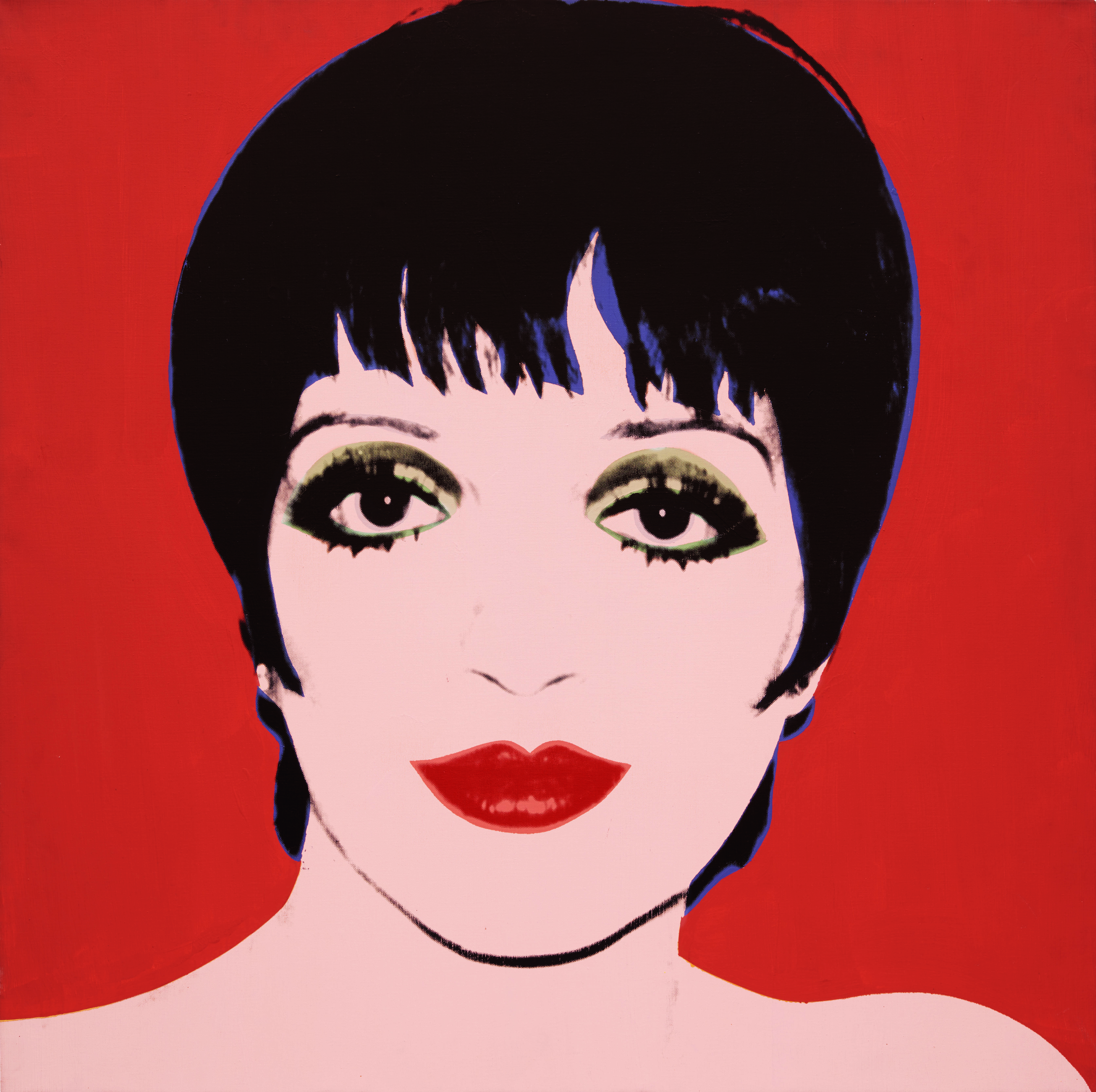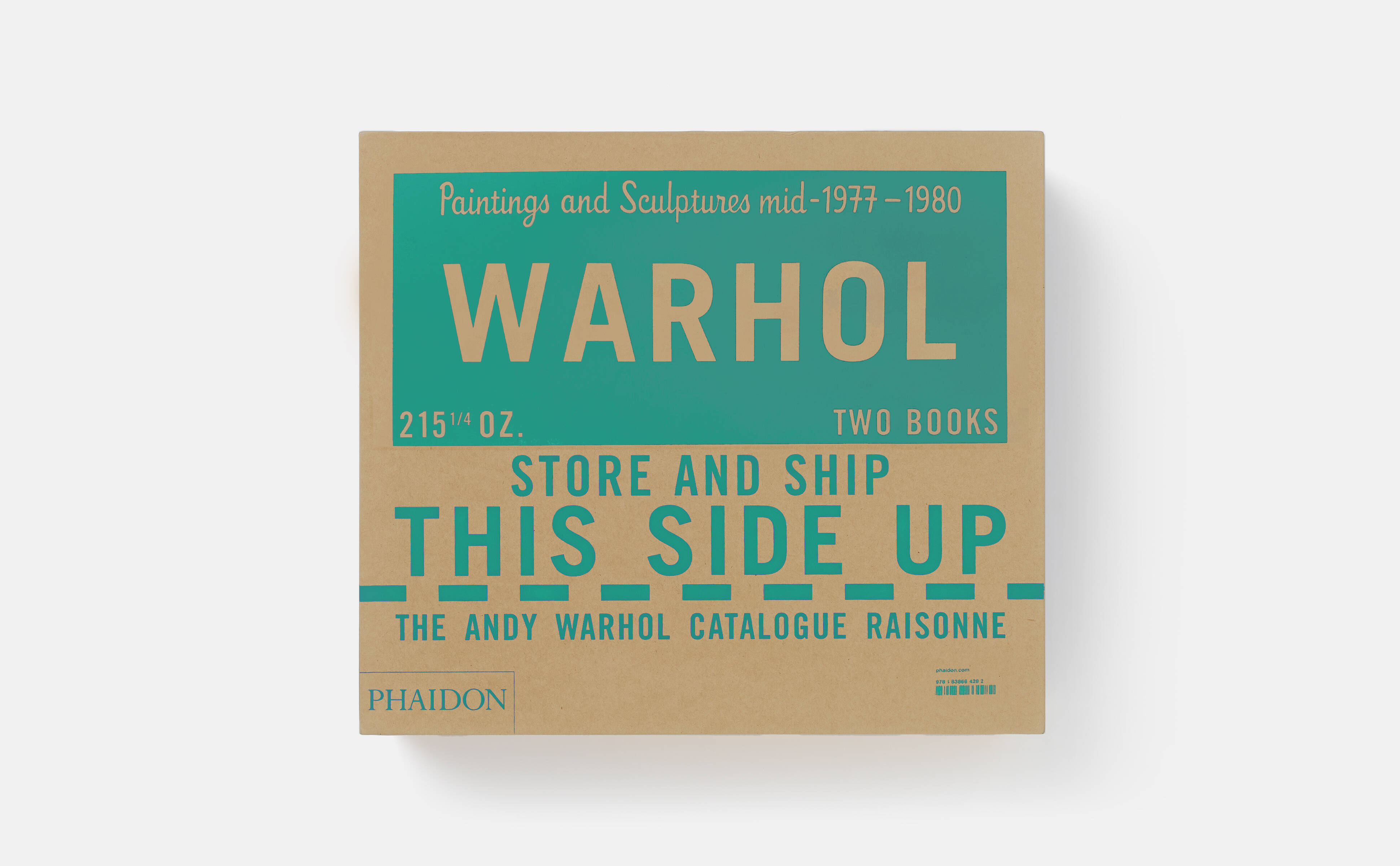
The story behind Andy Warhol's Liza Minnelli portraits
Our new Catalogue Raisonné traces the enormously inventive period of Warhol’s career from mid-1977 to 1980 - his portraits of Liza Minnelli are among the works examined
Part of the appeal of having one’s portrait done by Andy Warhol was that it was thought to be a bit daring, a bit naughty, a bit intellectual. The portraits were a significant part of Warhol’s many practices and have become among the artist’s most recognizable works. He painted 150 portraits alone during 1974 - a peak year during the 1970s, and also returned to them in 1978 and 1979 - part of the period covered by our new Volume 6 of The Andy Warhol Catalogue Raisonné.
At 802 pages and consisting of two hardcover books in a slipcase with over 740 paintings and sculptures, Volume 6 of The Andy Warhol Catalogue Raisonné - the highly praised, definitive reference to Andy Warhol’s extensive artistic production - covers an enormously inventive and productive period of Warhol’s career from mid-1977 to 1980.
We’ve been focusing on some of the background stories in the Raisonné as we count down to its publication in July. Today's story focuses on Andy’s portraits of the actress Liza Minnelli with text excerpted largely, but not exclusively, from the two-volume set.

Minnelli was introduced to Warhol by the fashion designer Halston and featured on the cover of the August 1972 issue of Interview during her star turn in the movie Cabaret. When Minnelli’s Broadway musical, The Act, opened at the Majestic Theater on October 29, 1977, Warhol attended the gala premiere. Three-and-a-half months later, on February 17, 1978, she sat for her portrait at 860 Broadway (The location for the Factory between 1973 and 1984).
Nineteen subjects sat for their portraits in 1978 and Warhol painted seventy-eight portrait canvases that year; in 1979, the numbers were greater, twenty-six sitters and 108 paintings.
For his portraits of Minnelli, Warhol instinctively selected a purely frontal view that showcased her three most salient features: dark eyes ringed by lashes; glossy red lips, silhouetted in a Cupid’s bow; and the black helmet of her Louise Brooks bob with a ragged fringe of bangs at the forehead and twin curls that framed her cheekbones.
When Minnelli arrived for her sitting on the afternoon of February 17, she was already wearing “the right makeup,” with three outfits by Halston in tow, including two from The Act.
Minnelli’s glossy lipstick doubtlessly inspired an innovation that would become a trademark of Warhol’s female portraiture after 1978: in three of the 40-inch portraits and both 14-inch portraits, he sandwiched a hand-painted white highlight between a hand-painted pale red silhouette of the lips and a separately printed crimson halftone, simulating the luster of her lips.
Warhol shot thirty-seven Polaroids of Minnelli, selecting a frontal pose for the eight portraits he painted.
It seems surprising that Warhol shot only thirty-seven Polaroids, but as Minnelli later recalled to a columnist in Harper’s Bazaar, “It was so busy down there … [Sitting for Warhol] was fun and very short. He would get what he wanted very quickly; he had an idea.”
Warhol reported on Minnelli’s sitting in his book of photographs and reminiscences, Andy Warhol’s Exposures (1979): “Liza is always on, and I am always off. Liza has what Diana Vreeland calls “built-in show biz” … Whenever Liza walks into a room, everything stops and people wait for the act to begin.”
“The Act was the perfect title for her show. One day she came to the Factory to have her picture taken and all work stopped. The entire staff offered to get her a drink and took one themselves while they were at it. Then they all pulled up chairs and sat around watching her eat lunch. One kid got so excited, he Xeroxed his crotch and gave it to Liza. She got really mad, insulted. And it wasn’t an act. But it was part of the show.”
Already a celebrity event, Minnelli’s sitting was interrupted further when John Lennon unexpectedly arrived at the studio.
In the account in the book Andy Warhol’s Exposures, when the studio doorbell rings, Robyn Geddes, the receptionist, looked at the closed circuit TV, didn’t see a lunatic, figured it was a messenger boy, and buzzed him in.
“Who should come walking through the bullet-proof door but John Lennon in a pea jacket and wool hat. Robyn came in and said, ‘Andy, John Lennon is here and wants your printer’s name. Should I give it to him?’ Liza screeched, ‘John Lennon! I’ve never met him! Where is he?’”
“It’s really great to be there when two big stars collide, especially if you have your camera and tape recorder. They looked so adorable together. They should do a show together. I’d love to produce it.”
A photograph of Minnelli and Lennon, displayed across a double page spread in Exposures and captioned ‘First meeting,’ captures the moment: Minnelli on the left side of the spread and Lennon on the right, both smiling sweetly, looking ‘adorable together’.
Warhol recorded the event in his diaries, writing: “John Lennon came by and that was exciting. He’s lost weight. Rupert’s [Jasen Smith, Warhol's printer] working on some art thing with him. And he was sweet. He’d refused Catherine [Guinness] the autograph in the restaurant the other week, but Paul McCartney’s picture was in the paper the other day, and when she asked him again he drew a mustache on Paul and signed it.”

In a sense, the Minnelli portraits seem to look back to the flat, graphic style of Warhol’s Pop paintings of the 1960s. It is also worth considering to what degree Warhol was taking certain stylistic cues from Minnelli’s ‘Halston-look,’ with its emphasis on brilliant and unmodulated color, high-contrast, contour, and silhouette.
The Minnelli commission marks a decisive turning-point in Warhol’s portrait practice. Thereafter, his female portraits revisit what he referred to as his ‘hard style’ of the 1960s, whereas his male portrait heads tend to be mounted on backgrounds that are painterly and multicolored.
The iconic frontality of Minnelli’s pose and the radical reduction of her features to three points—the cosmetic zones of her two eyes and lips—only intensify the stylization of her portrayal and the transformation of her face into a theatrical mask.
Above all, it is Liza’s lips that reveal how Warhol was developing what would become a signature attribute for female sitters of his late portrait style: lips that consist of layered hand-painted and silkscreened elements.
The paintings and sculptures reproduced in The Andy Warhol Catalogue Raisonné: Paintings and Sculptures mid-1977–1980 (Volume 6) are accompanied by over 700 images of source materials, the artist’s Polaroids, contact sheets, and archival photographs of gallery and museum installations, as well as related works.
The editors of the catalogue raisonné and a team of researchers scoured the secondary literature, examined thousands of works of art, reviewed the artist’s archives and diary entries, and interviewed assistants, colleagues, portrait sitters, and friends to elucidate Warhol’s materials, techniques, and artistic process. Take a closer look here.